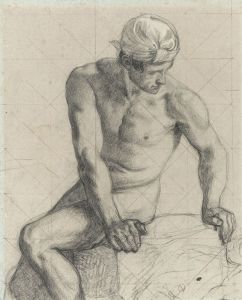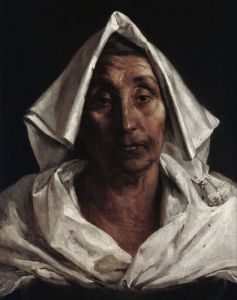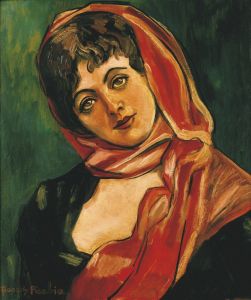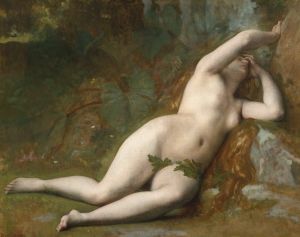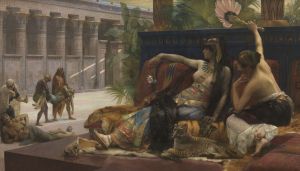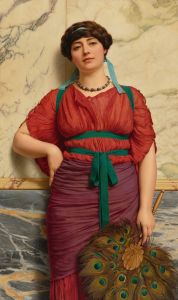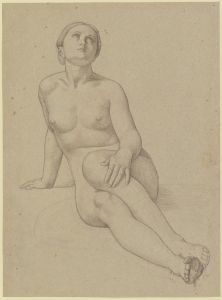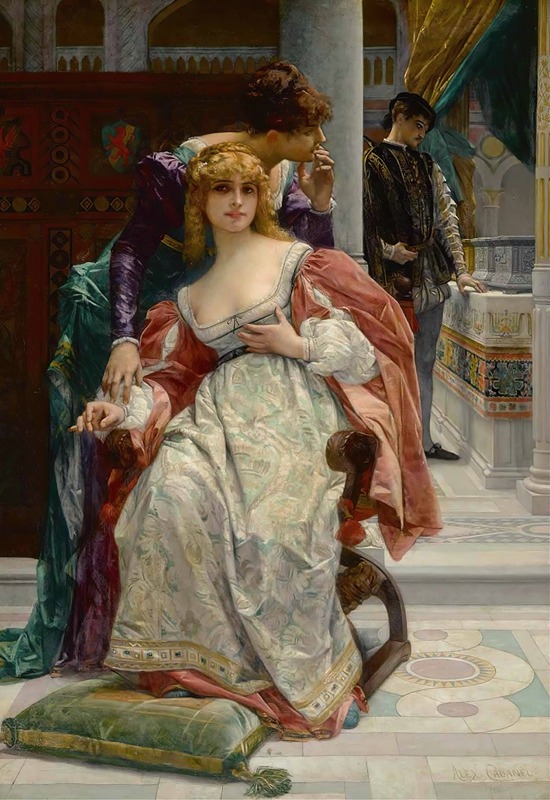
La Belle Portia
A hand-painted replica of Alexandre Cabanel’s masterpiece La Belle Portia, meticulously crafted by professional artists to capture the true essence of the original. Each piece is created with museum-quality canvas and rare mineral pigments, carefully painted by experienced artists with delicate brushstrokes and rich, layered colors to perfectly recreate the texture of the original artwork. Unlike machine-printed reproductions, this hand-painted version brings the painting to life, infused with the artist’s emotions and skill in every stroke. Whether for personal collection or home decoration, it instantly elevates the artistic atmosphere of any space.
Alexandre Cabanel, a prominent 19th-century French painter, is known for his academic style and his contributions to the genre of historical and mythological painting. One of his lesser-known works is "La Belle Portia," which exemplifies his skill in portraiture and his ability to capture the elegance and beauty of his subjects.
"La Belle Portia" is a portrait that reflects Cabanel's meticulous attention to detail and his mastery of the human form. While specific details about the painting's creation, such as the exact date and the identity of the sitter, are not widely documented, the work is consistent with Cabanel's style during the height of his career. Cabanel was a leading figure in the academic art movement, which emphasized traditional techniques and often drew inspiration from classical themes and literature.
The painting likely depicts a woman named Portia, a name that carries historical and literary significance. Portia is a character from William Shakespeare's play "The Merchant of Venice," known for her intelligence, wit, and beauty. However, without concrete evidence linking the painting directly to Shakespeare's character, it remains speculative to assert any direct connection. Cabanel's choice of title may simply reflect an admiration for the qualities associated with the name Portia.
Cabanel's portraits are renowned for their lifelike quality and the delicate rendering of textures, such as skin, fabric, and hair. In "La Belle Portia," these elements would be expected to be present, showcasing his ability to create a sense of realism and depth. His use of light and shadow would enhance the three-dimensionality of the figure, a hallmark of his portrait work.
The artist's broader body of work often includes mythological and allegorical subjects, and he was known for his ability to infuse his paintings with a sense of narrative and emotion. While "La Belle Portia" is primarily a portrait, it may also convey a story or character study through the expression and pose of the subject, inviting viewers to engage with the painting on a deeper level.
Cabanel's influence extended beyond his paintings; he was also a respected teacher at the École des Beaux-Arts in Paris, where he mentored many young artists. His work was celebrated during his lifetime, earning him numerous accolades and commissions from prestigious patrons, including Napoleon III.
"La Belle Portia," like many of Cabanel's works, would have been appreciated for its technical excellence and its embodiment of the ideals of beauty and grace. While it may not be as widely recognized as some of his other paintings, such as "The Birth of Venus," it remains a testament to his skill as a portraitist and his contribution to 19th-century French art.
In summary, "La Belle Portia" by Alexandre Cabanel is a portrait that exemplifies the artist's academic style and his ability to capture the elegance of his subjects. Although specific details about the painting are limited, it reflects Cabanel's broader artistic achievements and his role in the academic art movement.





